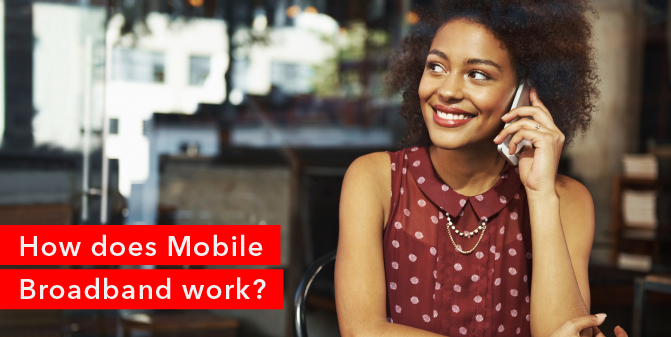How does Mobile Broadband work?
Whether we are at the office or in the comfort of our own homes being connected to the Internet through a broadband (high-speed) connection has become ingrained in our daily routines, anything slower is down right frustrating. But what about when we are on the go, how do we stay connected at the speed to which we have become accustomed?
This is where Mobile Broadband comes in. Mobile Broadband enables you to connect to the Internet wherever you are whenever you need to. But what is Mobile Broadband and how does it work?
In this article we take a closer look at how Mobile Broadband actually works to make connecting to the Internet wherever you are just that much easier.
The Hardware
Mobile Broadband works by using any of the following hardware:
- A portable USB modem (known as a dongle) that plugs directly into a USB port and uses a SIM-card to connect to the mobile network.
- A data card or built-in device, this is available on some laptops.
- A mobile Wi-Fi (MiFi) device, this works like a dongle but allows you to connect more than one device to the Internet using the same signal mobile phones use.
Before you decide to purchase a Mobile Broadband device, it is very important to check if the device is compatible with the operating system you will be using.

The Technology
Due to the improvements to the cellphone networks you can now get broadband-speed (from 4-45 Mbps upload/download if you are in a high coverage area, such as a CBD or major town), wireless Internet through a mobile phone connection wherever you are.
Most cellphone networks have introduced packet-switching technologies. This means that the telephone line is split into two, one a voice channel and the second a data channel. The data channel constantly sends and receives packets of digital data to and from your device or laptop without interfering with the voice channel.
These packet-switching technologies are referred to as third-generation networks (3G) and offer data speeds of between 350kbps-2MBps. Over the years this 3G technology has evolved to make packet-switching across cellphone networks even more efficient. This lead to the development of High-Speed Downlink Packet Access (HSDPA), which is up to five times faster than 3G. More recently we have seen the introduction of 4G networks that are based on Long-Term Evolution (LTE) technology, which is seen as the most advanced and fastest Mobile Broadband connection currently available.
Unlike a phone call where you pay for the time spent per call, Mobile Broadband charges you by the amount of data you download. You can purchase data bundles from your service provider, which will give you a predetermined amount of megabytes or gigabytes for a set price depending on your needs. For example; 500MB, 1GB or 10GB of data.
Using Mobile Broadband
There are two ways you can make use of Mobile Broadband:
1) If you have a smartphone with a data connection enabled you can surf the Internet, check your social media or download music directly on your phone at broadband speeds.
2) To connect your laptop when you are on the go by using a dongle or a mobile Mifi device.
Mobile Broadband is available in a variety of packages to suit your specific needs. To see the packages offered by RSAWEB click here or contact us on 087 470 0000 or [email protected]
For more on Mobile Broadband you can read some of our other articles:
Things you need to know about mobile broadband
Mobile Broadband Internet for you



